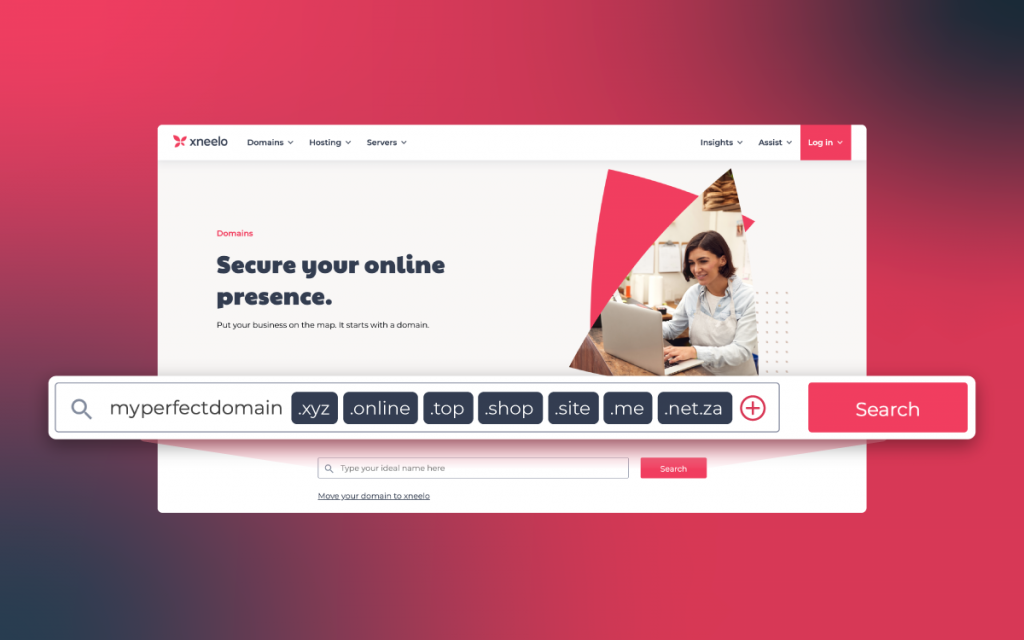
If you have never built a website from scratch, your first thought might be to ask for professional help. It is a common misconception that creating a website requires design or coding experience. WordPress is a content management system (CMS) designed to be used by anyone, with no design or coding experience necessary.
Themes, plugins and the Block Editor make it simple to put a website together – in as little as a few minutes. There are thousands of resources available to help you every step of the way, including this guide, which is designed to debunk the myths and outline just how easy it is to create a website with WordPress.
After reading this guide, you will be equipped to create your first WordPress website with confidence and ease.
Why use WordPress to build my website?
WordPress has a track record of reliability, flexibility, and simplicity and is currently used by 43.0% of all websites. WordPress is quick and easy to use, and suitable for any type of website, from a basic portfolio to a photo blog or e-commerce store. It’s also extremely customisable. The Block Editor, themes and plugin library allow you to play around and re-order your website’s look and feel till you’re completely satisfied – without needing to call in a graphic designer. All the themes and plugins you need are right at hand.
With managed WordPress hosting, the process is made all the more simple, as an optimised version of WordPress will already be installed and available to use immediately. All you need to do to create a website is to simply choose a theme or Starter Site and customise it to your needs. But more on that later.
The biggest reason you should choose WordPress is because it’s easy.
How much does it cost to build a WordPress website?
If you’re looking for a simple blog, portfolio or online business card, the free WordPress.com plan will do the trick. Just remember that your domain and website hosting have costs associated with them as well as their own payment options.
As discussed in our WordPress hosting guide, the cost of using WordPress differs by user and the type of website you want to build. Managed WordPress hosting has the benefit of providing optimised WordPress and web hosting in one, saving you from having to pay and manage them separately.
Pricing depends on the plan and provider you choose. A basic managed WordPress hosting plan can cost below R100, while more advanced plans can exceed R600. Look for a plan with the features you want without any of the expensive bells and whistles you don’t need.
Managed WordPress hosting has the benefit of providing optimised WordPress and web hosting in one, saving you from having to pay and manage them separately.
What to plan ahead
Creating a website, even taking your business online, isn’t a decision to take lightly, and there are a few practical considerations you need to tackle first.
Set goals and objectives
What do you want to achieve with your website? Do you want to create an online store, capture sales leads, or offer educational content to enhance your brand’s authority? What you want to achieve will dictate your overall layout and design.
Do your research (optional)
For a business website, as with any business, doing your research is key for getting to grips with your competitor landscape and target audience so you can create an offer or value proposition that’s fair.
The practicalities
In order to get your website up and running, you will need three main elements:
WordPress, a web hosting provider, and a domain. See our WordPress hosting Guide.
Get creative
Once you have a plan, a goal and WordPress installed and running, it’s time to bring your vision to life. Spend some time aligning your website with your business’s unique brand identity, including a logo for your website, and an insightful About page that tells your brand story.
For personal websites, you can use a free design tool like Canva to create headers for your new site. Just ensure they are optimised and resized for the web to avoid page speed problems.
Choosing a domain and web hosting partner
Your domain is your website’s address on the internet – your IP address. Choosing a domain involves two important steps – choosing a domain name and extension.
We’ll go through each one separately.
Choosing a domain name
Your domain name is the name of your website that someone types into the address bar of their browser. You want to choose something simple enough for your customers to remember, that’s also easy to spell. Before you commit to a company name, make sure that it is available and that another brand isn’t using it – or something very similar.
Read more tips on choosing a domain name here.
Choosing a domain extension
The domain extension is what comes after the second period, i.e., .com, .co.za, etc. Usually, your choice of domain extension is based on availability, location, and preference.
Here are some tips for choosing a domain extension:
- If you operate exclusively in South Africa, use .co.za
- If you’re local to one city, consider .capetown, .durban or .joburg
- Choose .africa if you operate throughout Africa
- .co is often seen as the alternative for .com
- If you are an NPO, you can register a .org or .org.za
Registering a domain
Once you’ve decided on a domain name, you’ll need to determine if it’s available to register. Be sure to register the domain name as soon as you know which one you want as domains are registered on a first-come, first-served basis.

Choosing a web hosting partner
When it comes to choosing a web hosting provider for your WordPress website, there are several factors you need to consider. These include, but are not limited to:
- The resources you’ll need
- Capacity to scale
- Availability of technical support
- Price and bang for buck
- An excellent track record
- Security protocols in place
Look for a web hosting provider that offers managed WordPress hosting. This is a great option for busy business owners and those who are not fully comfortable managing the technical aspects of their websites themselves.
For more details on the above factors, refer to our WordPress hosting guide.
Installing WordPress
If you are using a shared WordPress hosting account, then you would need to install WordPress manually by downloading the free open-source WordPress CMS from WordPress.org, and installing it on a shared hosting server.
This option is popular for more technically advanced users who wish to have more control over their WordPress website. With Self-Hosted WordPress, website hosting still needs to be purchased and you’re responsible for all updates and maintenance yourself.
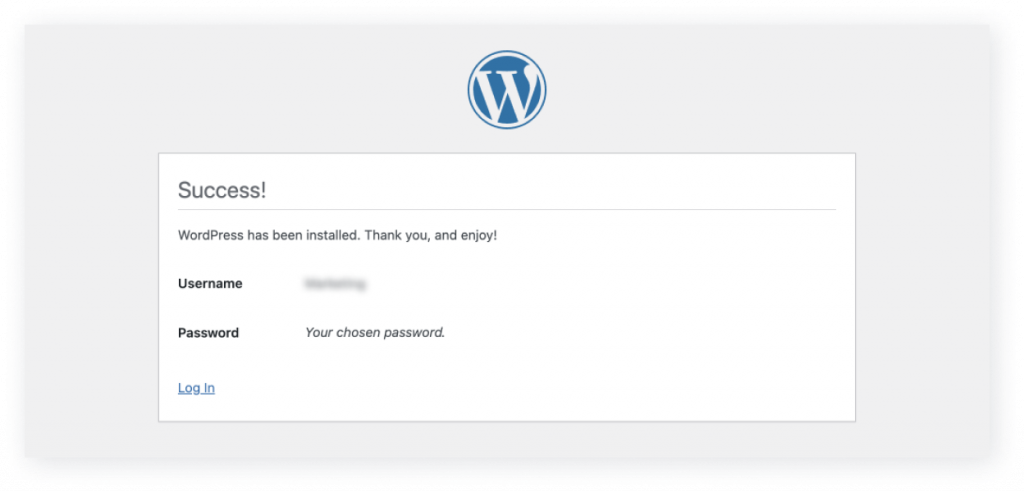
If you have opted for managed WordPress hosting through WordPress.com or a managed WordPress hosting provider, WordPress will already be pre-installed and ready for you to create your website.
Choosing a theme
Choosing a theme for your website is like choosing a shop front for your store. We recommend taking your time with this decision and picking a solution that meets your long-term needs. Look for a theme that matches your unique identity – your brand identity, colour scheme, etc. Themes can be changed, but changing your theme too often might confuse customers and create a negative impression.
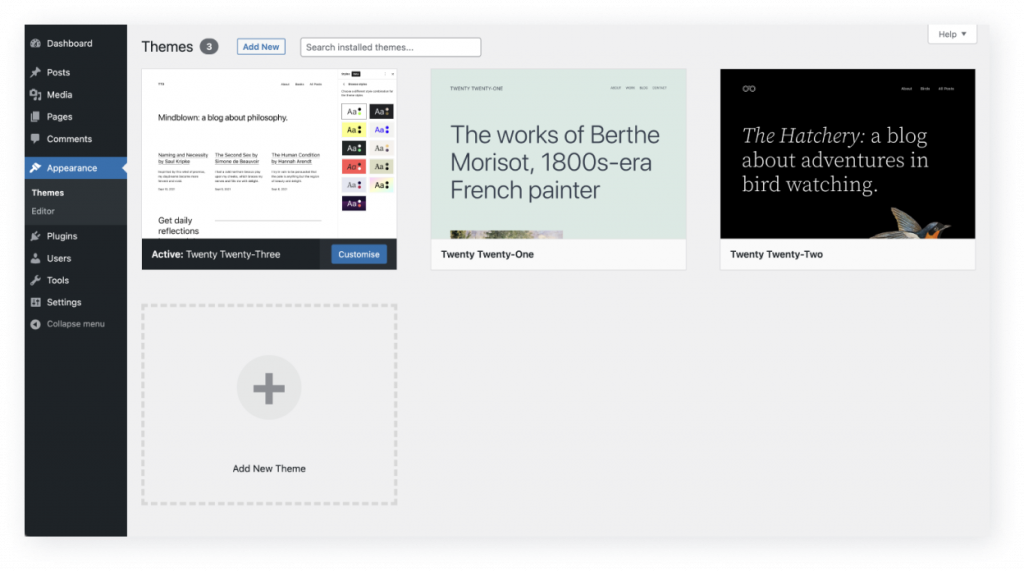
Start by browsing the WordPress Theme Directory, where you’ll find a selection of free themes. The theme directory groups themes by the most popular and latest options, but you can sort them by specific features and industries. There are also a variety of paid themes available but tread carefully. While paid themes may look professional and have all the pages you need, make sure the theme you choose is compatible with your plugins, doesn’t slow down your website, and has favourable reviews from other users.
Xneelo Managed WordPress Hosting offers a number of Starter Sites designed specifically for small-business websites and different industries. Similar to themes, Starter Sites are ready-to-use website templates that have been professionally designed and laid out, reducing the time and cost it takes to build a business website.
Must-have pages
One decision you have to make is what pages to include on your website. Not only does your website act as your storefront, but it also needs to contain all the information a customer needs to make an informed buying decision and contact information if they want to get in touch with you. Most importantly, it needs to showcase your business in the best light.
We’ve listed the most important website pages below.
Home page
Research shows that 99% of websites have a 10-second opportunity window – this means visitors decide in 10 seconds whether they want to stay or leave. Keep your home page simple, make sure all the most important information is above the fold, and include a strong call-to-action – tell visitors what you want them to do.
About page
Your About page tells visitors who you are and what your business is about. It’s your space to tell your brand story, share your values, and unpack your vision.
Product or services page
Your products and/or services pages should provide information about what your business offers. Some key elements to include are the most important product features and benefits, call-to-actions, and high-quality images.
Contact page
Customers need to be able to get in touch with you – so include your contact number and email address. It’s also useful to add Google Maps if you have a physical address that’s open to the public to help customers find you.
A blog or news page
A blog page helps to establish you as an authority in your area of expertise. To do this, though, you must make sure the content you publish is both accurate and useful for your readers.
How to customise with widgets and plugins
While WordPress includes the basic features you need to create your website, plugins add additional functionality like SEO optimisation, form builders, chatbots, e-commerce functionality, shipping, and additional security. The WordPress Plugin Directory has over 60,000 plugins to choose from.
For security reasons, use the WordPress Plugin Directory when choosing a plugin and look for plugins with favourable user reviews, that are regularly updated and compatible with your version of WordPress, and have a large number of active installations.
Widgets, on the other hand, add a variety of extra functionality and content to your website, usually in the sidebars and footer areas. You can access widgets directly from your WordPress dashboard. Examples include an X (formerly Twitter) or Instagram feed and social media buttons.
WordPress recently released the block-based widget editor that allows you to customise your widget areas using the Block Editor, in the same way you would for website content.
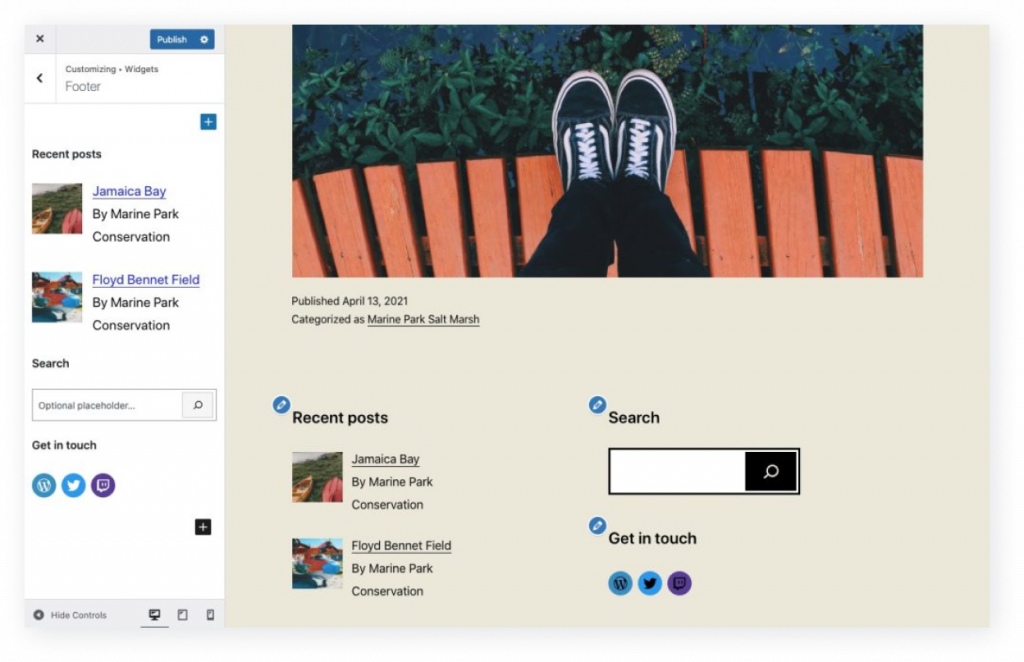
Website branding
As we’ve already mentioned, your website forms an important part of your brand. It’s your customer’s first impression of you and your business, so you want to make an instant impact. How do you want your customers to feel when they visit your website? What impression do you want them to have of you?
You want your brand to stand out from the rest, so don’t shy away from being creative. Use photography to bring your products and services to life, as well as part of your brand story. Don’t rely on stock images that all other businesses use. Show your team, or offer a glimpse of the real business behind the screen.
The goal is to be authentic. This helps to create a bond with your customers and lends authenticity to your business.
Optimising your website
In order to achieve success from your website, you want it to perform at its best.
Regular maintenance
To keep your website running optimally, make sure your website is maintained regularly. Maintaining your site also helps to improve the experience for your visitors, as you spot issues and correct them before they become major problems. 88% of users are less likely to return to a website if they didn’t have a good first experience.
Some website maintenance tips include:
- Make sure all of your plugins and themes are updated.
- Always use the latest version of WordPress. Updates are essential for your website’s security and stability.
- Run a website health check including testing your page speed (use a tool like Google PageSpeed Insights), mobile responsiveness and security.
- Check with your hosting provider about their backup schedule and back up your site.
- Fix broken links! They’re bad for user experience as well as your search rankings.
- If page speed is a problem, consider using a CDN.
- Install a WordPress plugin like Jetpack for all-around optimisation. It’s one of the most frequently downloaded plugins and includes security and performance features, as well as daily backups to help secure your site.
Search Engine Optimisation
While maintenance is essential for keeping your website running smoothly, there are other optimisation methods you can employ, such as Search Engine Optimisation (SEO), which is used to improve your website’s search engine ranking.
A good starting point is to conduct an SEO audit on your website and follow the guidelines provided on how to achieve some quick wins. To optimise your website content, install an SEO plugin like Yoast SEO, which provides handy SEO tips right in the WordPress editor, to help you maximise the potential of every post and page.
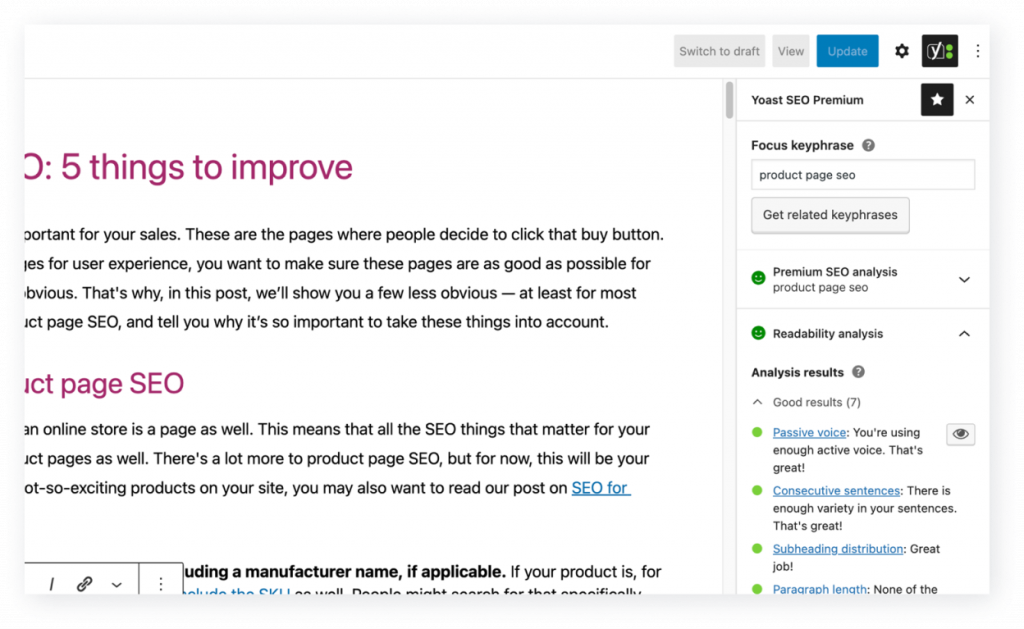
Mobile-friendliness
Having a mobile-friendly website is essential, especially if you have an e-commerce store. 50.48% of global web traffic comes from mobile devices, while in South Africa, over 70% of users browse from their mobile phones. Google has adopted a mobile-first algorithm, so having a site that isn’t mobile-friendly is costly – it will definitely cost you search engine traffic. Besides, visitors can’t shop if they can’t use your website properly.
Most WordPress themes are designed to support responsive design, which are websites that respond based on the needs of the device they’re viewed on. You can use a tool like Google’s Mobile-Friendly Testing Tool to find out how your site rates, and what you need to do to fix any issues.
Steps to improve the mobile-friendliness of your website:
- Choose a mobile-friendly theme.
- Test any updates or customisations to your website through a mobile device.
- Avoid using full page pop-ups, large images or long animations.
- Simplify your navigation.
- If necessary, install a mobile-friendliness plugin like WPTouch.
Finding support
One of the biggest advantages of using WordPress to build your website is the quality of support. The WordPress community is a strong, vital group of developers, web designers, marketers, and small business owners. As part of the WordPress community, you have access to an abundance of online resources including support articles and forums.
If you are opting for managed WordPress hosting, be on the lookout for a hosting provider that prides itself on its customer service and provides you with helpful resources to guide you if you prefer to figure things out on your own.
Using WordPress to create your first business website is one of the best decisions you can make. It’s quick, easy and flexible enough for anyone to create a website suited for any industry.
You should now have all the information you need to create your first website with ease. Good luck!
If you think managed WordPress hosting is the right option for your business website, try it free for 30 days.


